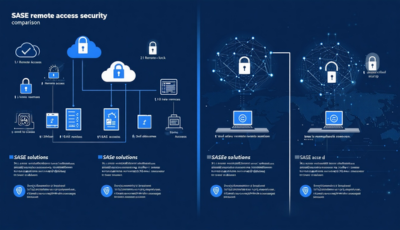The shift to a cloud-centric technology strategy is being quickly followed by the growth of the Internet of Things (IoT) in changing how enterprises and people connect. In order for these developments to benefit both business and personal access to better technology experiences, architecture must grow along with them. A decentralized approach through hybrid edge cloud computing may be the solution that allows enterprises to fully leverage the capabilities of interconnected devices.
Today’s applications are hosted in data centers from Facebook to Google, and a cloud-centric model has enabled more connectivity for business. The hierarchical architecture supporting client-server technology accesses data servers, but there are indications that this is becoming an inefficient way to manage data. There are three key trends emerging:
The Edge: The IoT has experienced explosive growth with devices connected to centralized data centers via a network of hubs and gateways. As the technology advances, the edge is now a collection of devices that each have more computing power than servers did 10 years ago. The edge is growing in power.
Social Advances: The use of social media on mobile devices has multiplied the content generated on the edge. Regular consumers are creating and distributing much more content than what is being hosted on central servers located in the cloud. The current architecture of networks means that data created on edge devices is backhauled to servers for processing in the central cloud before it is shared.
Decomposition: Solutions are deployed automatically from a serverless environment through the use of application programming interfaces and microservers. The cloud is accessed according to demand and scaled easily for enterprise needs.
Hybrid Edge Cloud Computing
Current approaches that are fixed and arranged in a client-server hierarchical network architecture create a bottleneck for technology expansion. Sending data from devices to centralized cloud servers is a waste of both energy and bandwidth.
In addition, developers require cloud service providers that allow access to apps and data stored on their servers, creating a security risk for the owners of this information.
The growth of computing at the edge along with the need for developers to access the apps and data is creating an opportunity for hybrid edge cloud computing. Enabling a device to act as a cloud server allows for organic scalability as the enterprise grows. Hybrid edge cloud computing frees up central cloud resources that tend to demand bandwidth, real estate, and power that can all be offloaded to the edge. Edge devices can also host microservers – allowing for improved speed and flexibility for the fast-paced change of user requirements.
Hybrid edge cloud computing will require some shifting of resources and architecture of the network, but it aligns with the distributed approach to all things technology that is emerging in the enterprise IT environment. For more information about aligning your infrastructure with your IT goals, contact us at Clarksys.






